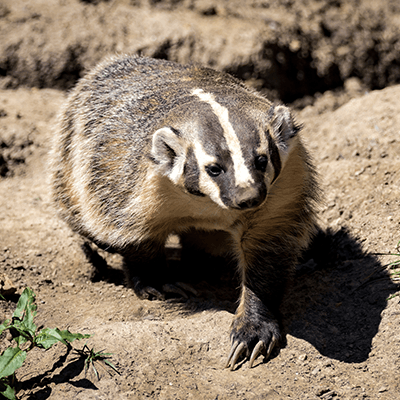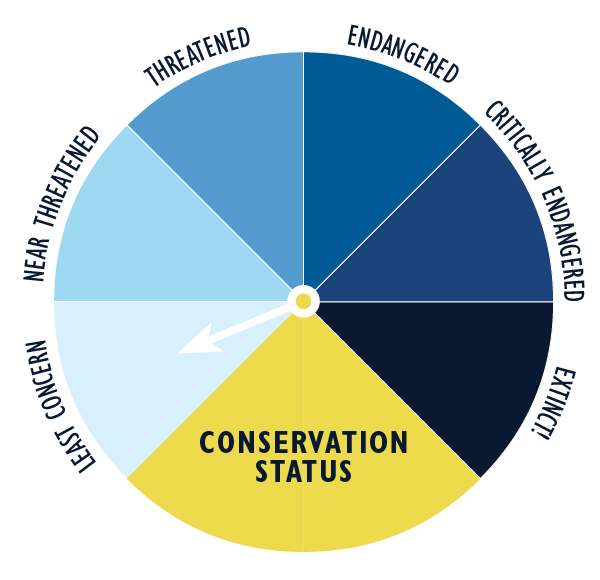
About American Badger
Did you know? Wisconsin is called the “Badger State” because of the lead miners that lived here in temporary caves cut into the hillside in the early 1800s.
Habitat
American Badgers live in dry, open grasslands and fields in Canada, Mexico and northern, western and central United States, including right here in Wisconsin!
Diet
They eat mostly ground-dwelling rodents and some birds, reptiles, amphibians, fish, insects, dead animals, and plants.
Family Life
Badgers mate in late summer or early fall, once per year. Litters range from one to five offspring, with an average of three. Baby badgers are born blind with a thin coat of fur, and they are independent in just five to six months!
Conservation Status
The conservation status of the American Badger is classified as least concern.
Threats
- Natural predators of the American badger include golden eagles, bobcats, cougars, and coyotes.
- The primary threat to this species, however, is humans. They are responsible for habitat destruction, trapping, hunting, automobile fatalities, and poisoning.
Facts about American Badger
Class:
Mammalia (mammals)Order:
Carnivora (carnivores)Family:
Mustelidae (badger, otters, weasels, and relatives)Genus:
Taxidea (American badger)Species:
Taxidea taxus (American badger)Life Span:
14 years (wild) / 26 years (zoo)Size:
1.7 – 2.8 feet (0.5 – 0.9 m)Weight:
8.8 – 26 pounds (4 – 12 kg)Tail Length:
4 – 6 inches (10.2 – 15.2 cm)
Fun Facts
- Check out those paws! Badgers are adapted for life underground with strong front legs and claws. They catch most of their prey by digging and can tunnel after prey with amazing speed.
- In winter, badgers go into a type of mini-hibernation called torpor. During torpor, a badger is normally inactive for about 30 hours at a time, and its body temperature drops very low (48˚F or 9˚C). During torpor, its heart beats at about half the normal rate.
- Our Henry Vilas Zoo badgers are named Kaminsky and Dekker. Can you guess their namesake?